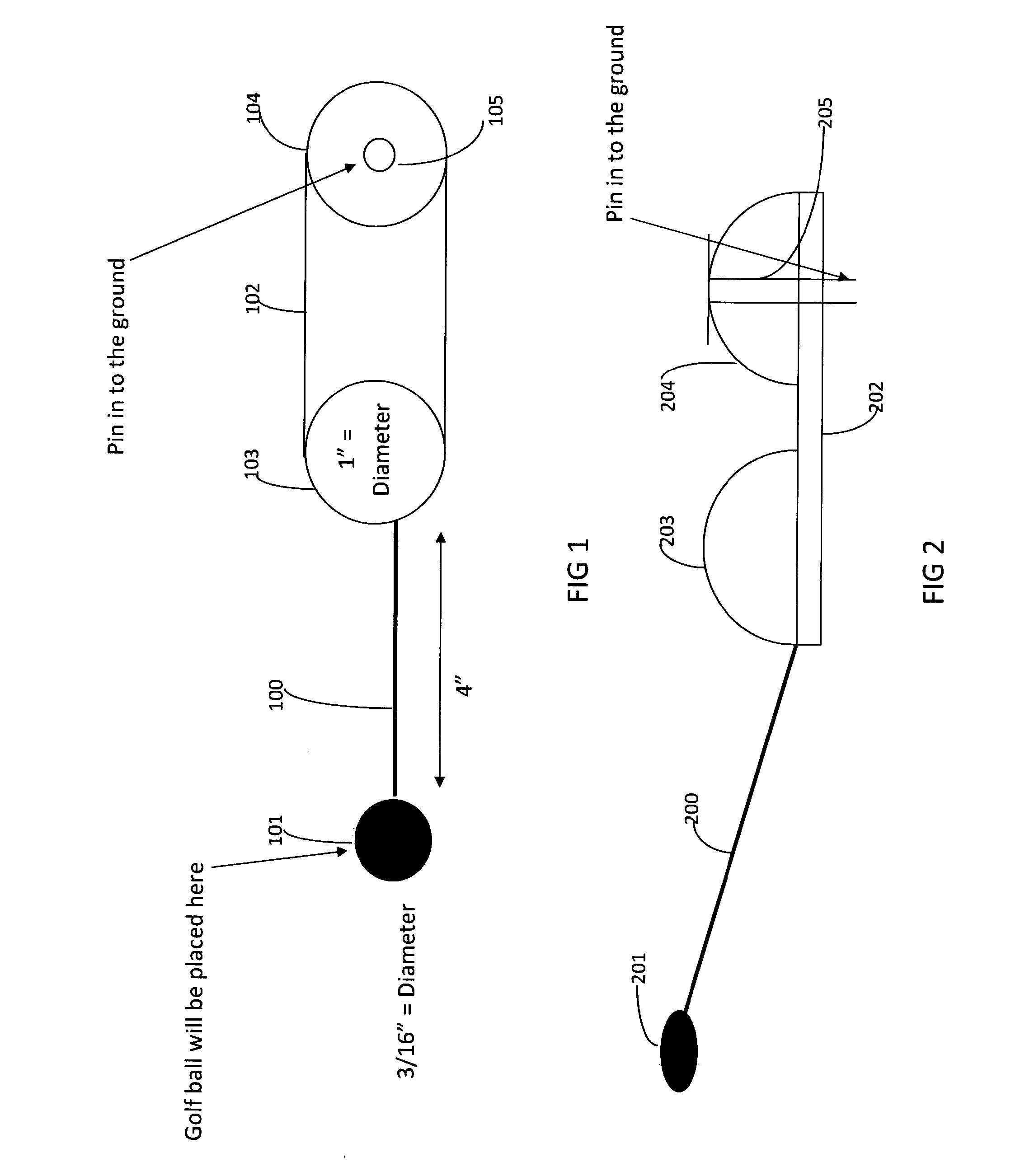Golf tee gadget and configuration
a golf tee and gadget technology, applied in the field of golf tee gadgets and configuration, can solve the problems of slowing down the golf club before hitting the golf ball, broken tees, and broken tees on conventional golf courses, so as to improve the accuracy of golf strikes, improve the golfer's swing alignment, and reduce the effect of undesirable forces
- Summary
- Abstract
- Description
- Claims
- Application Information
AI Technical Summary
Benefits of technology
Problems solved by technology
Method used
Image
Examples
Embodiment Construction
)
[0017]A golf tee gadget and configuration includes a stem with one end connected to a surface on which a golf ball can be held, and a flat plate connected to the other end of the stem, with the stem being connected to the flat plate at an angle. The flat plate includes one golf ball at each end. Viewed from a direct top position, the two golf balls and the stem surface are positioned along the same horizontal line that connects the golf ball centers and the center of the stem surface. The flat plate is pinned to the ground via a pin. The pin is located at an end of the plate that is farther from the stem and is inserted from the top of the golf ball and extends through the middle of the golf ball. The pin is made of a non-breakable flexible material. The flat plate length is shorter than the length of the stem.
[0018]Details of the present invention relating to various exemplary embodiments will now be described by reference to the drawings.
[0019]FIG. 1 shows the inventive golf tee ...
PUM
 Login to View More
Login to View More Abstract
Description
Claims
Application Information
 Login to View More
Login to View More - R&D
- Intellectual Property
- Life Sciences
- Materials
- Tech Scout
- Unparalleled Data Quality
- Higher Quality Content
- 60% Fewer Hallucinations
Browse by: Latest US Patents, China's latest patents, Technical Efficacy Thesaurus, Application Domain, Technology Topic, Popular Technical Reports.
© 2025 PatSnap. All rights reserved.Legal|Privacy policy|Modern Slavery Act Transparency Statement|Sitemap|About US| Contact US: help@patsnap.com


